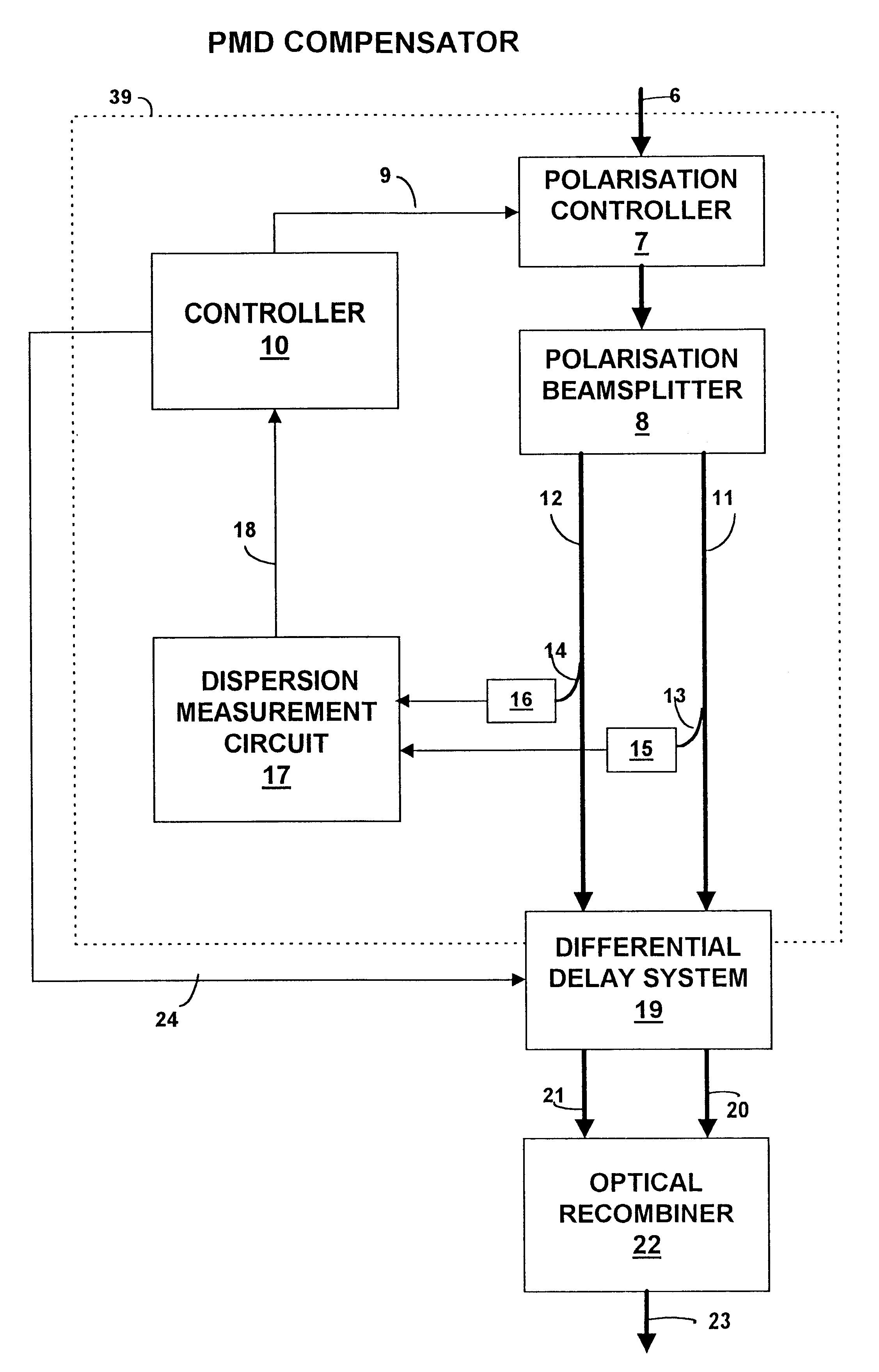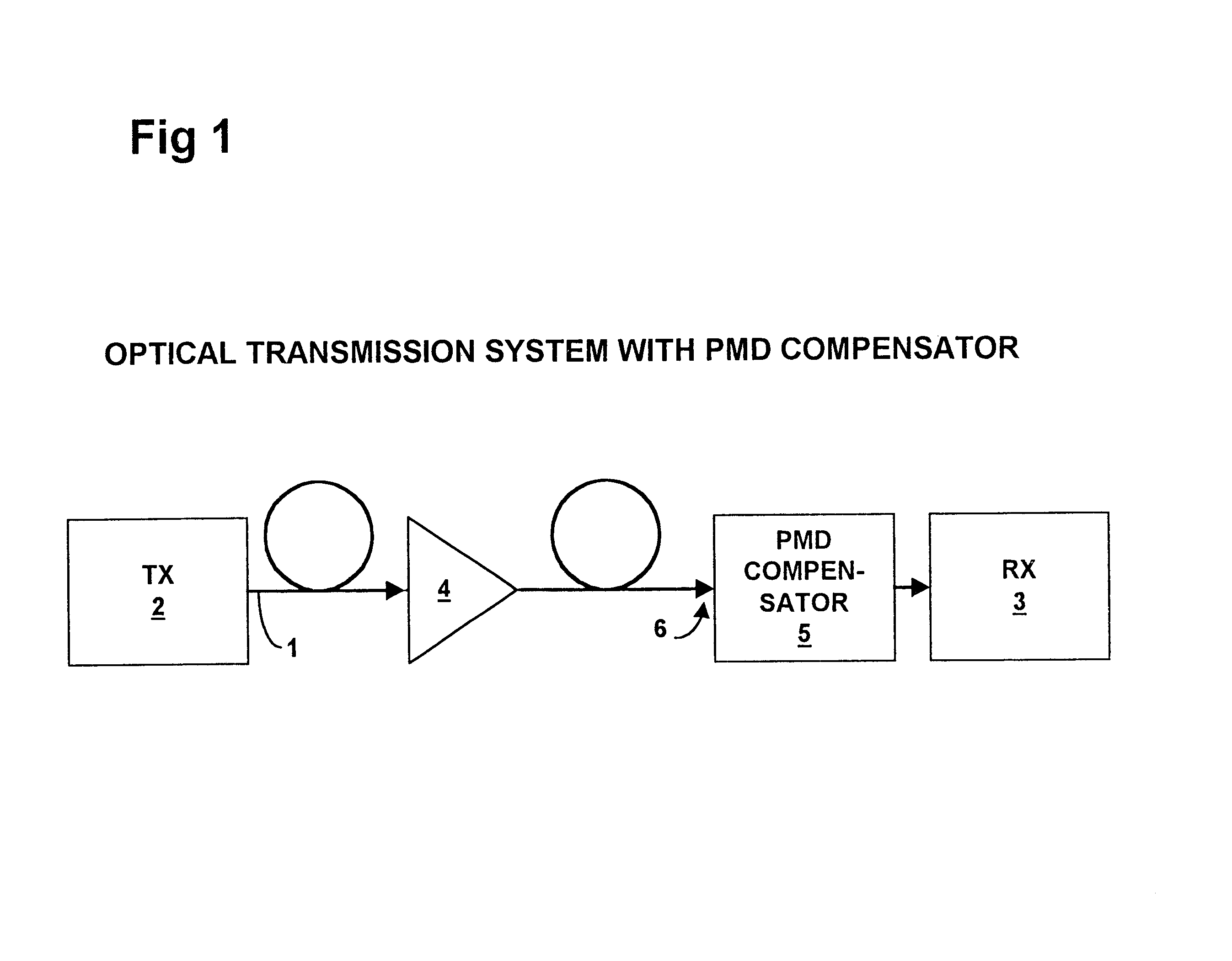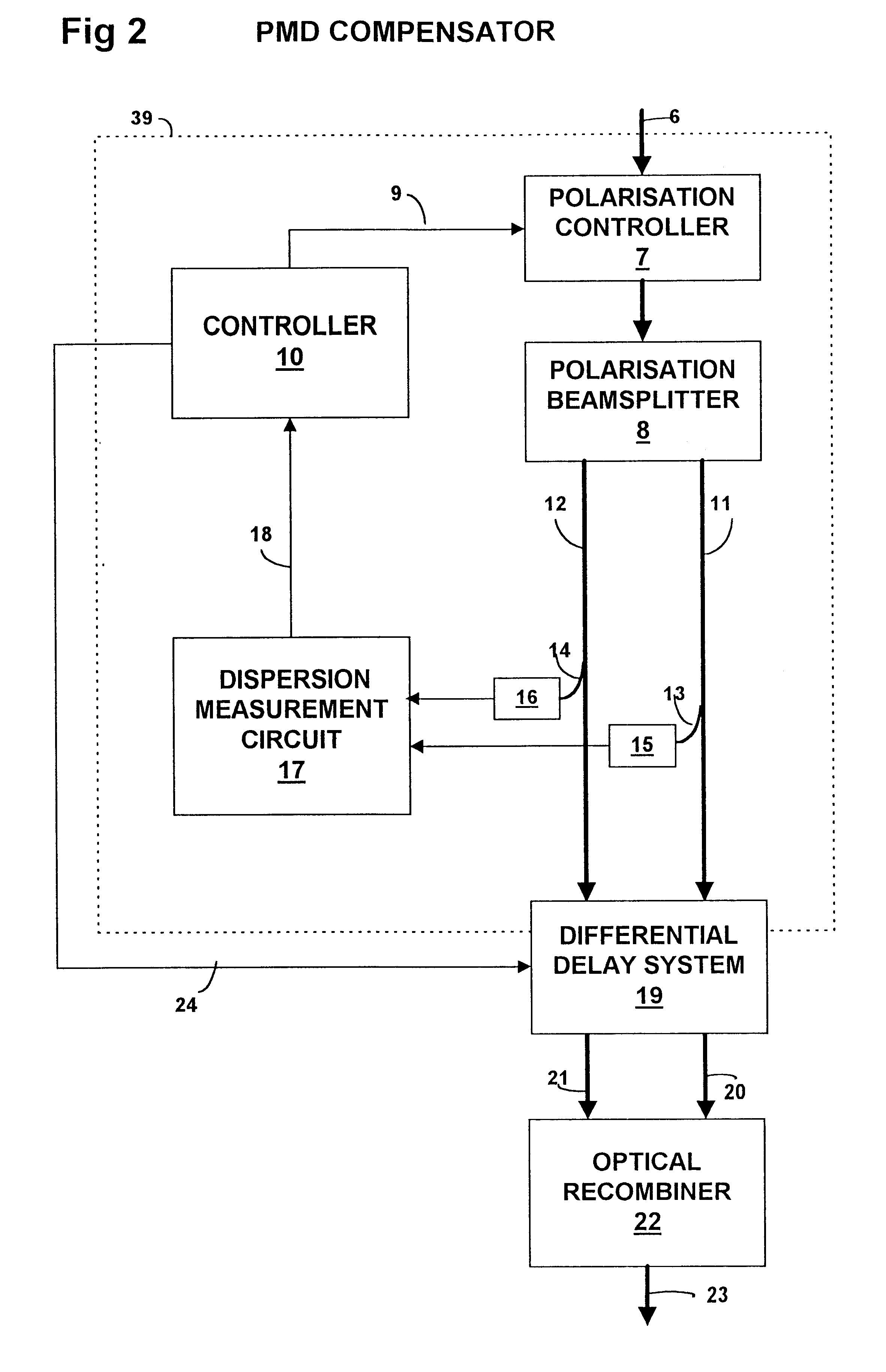Polarization mode dispersion compensation
a technology of dispersion compensation and polarization mode, which is applied in the direction of transmission monitoring, transmission monitoring/testing/fault-measurement systems, electrical equipment, etc., can solve the problems of fixed compensation amount, difficult control of launch state, and inability to adjust the dispersion of polarization mode suitable for a practical communication
- Summary
- Abstract
- Description
- Claims
- Application Information
AI Technical Summary
Benefits of technology
Problems solved by technology
Method used
Image
Examples
Embodiment Construction
In FIG. 1, an optical fibre 1 provides a transmission path for propagation of an optical signal from a polarised light emitting transmitter 2 to a receiver 3, this transmission path including an erbium doped optical fibre amplifier 4 and, adjacent the receiver 3, a PMD (polarisation mode dispersion) compensator 5.
The optical fibre 1 is a nominally circularly symmetric single mode fibre extending over a substantial distance, which in the present example is 100 km. Over a distance of this length the departures from perfect circular symmetry of that fibre, for example as a result of bending strain, are liable to be of a sufficient magnitude for the fibre to function as a concatenation of birefringent elements of random relative orientation. Moreover that orientation is liable to change with time.
When polarised light of any particular wavelength is transmitted through a single element exhibiting uniform birefringence, that light is, in general, resolved into two components (modes) propa...
PUM
 Login to View More
Login to View More Abstract
Description
Claims
Application Information
 Login to View More
Login to View More - R&D
- Intellectual Property
- Life Sciences
- Materials
- Tech Scout
- Unparalleled Data Quality
- Higher Quality Content
- 60% Fewer Hallucinations
Browse by: Latest US Patents, China's latest patents, Technical Efficacy Thesaurus, Application Domain, Technology Topic, Popular Technical Reports.
© 2025 PatSnap. All rights reserved.Legal|Privacy policy|Modern Slavery Act Transparency Statement|Sitemap|About US| Contact US: help@patsnap.com



